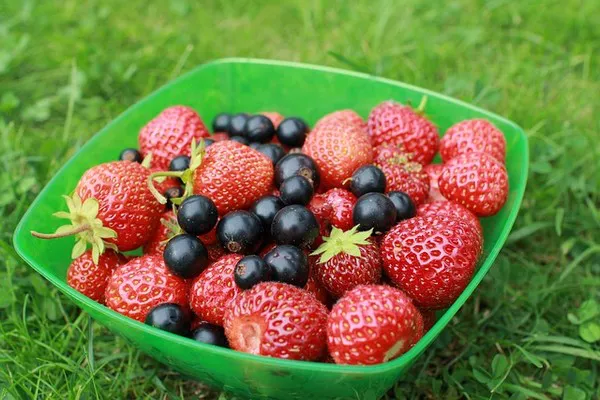Strawberries, with their juicy, vibrant red fruits, are a delightful addition to any garden. Whether you’re a seasoned gardener or a novice with a green thumb, growing strawberry plants can be a rewarding and fruitful experience. This guide will take you through the essential steps to successfully cultivate robust and delicious strawberries in your own backyard.
Choosing the Right Varieties
Selecting the right strawberry varieties is crucial for a successful harvest. There are three main types of strawberries: June-bearing, everbearing, and day-neutral. June-bearing varieties produce a single large crop in late spring or early summer. Everbearing varieties yield two crops—one in spring and another in late summer. Day-neutral strawberries produce fruit throughout the growing season, providing a continuous harvest.
Consider your climate and growing conditions when choosing varieties. Popular choices include ‘Chandler’ for June-bearing, ‘Albion’ for everbearing, and ‘Seascape’ for day-neutral.
Optimal Planting Time and Location
Timing is everything when it comes to planting strawberries. In most regions, early spring or late fall is ideal for planting bare-root or potted strawberry plants. Ensure the soil is well-drained and rich in organic matter.
Choose a sunny location for your strawberry patch, as strawberries thrive in full sunlight. The site should receive at least 6-8 hours of direct sunlight daily. Well-drained soil is essential to prevent root rot, a common issue with strawberries. Consider raising the planting area or planting in raised beds to improve drainage.
Preparing the Soil
Before planting, prepare the soil to create an optimal environment for strawberry growth. Test the soil pH, aiming for a slightly acidic range of 6.0 to 6.8. Incorporate well-rotted compost or aged manure to improve soil fertility. Work the soil to a depth of at least 6 inches, removing weeds and debris.
Planting Strawberries
When planting strawberries, space them properly to allow for good air circulation and prevent diseases. For June-bearing varieties, space the plants 12 to 18 inches apart in rows with 2 to 3 feet between rows. For everbearing and day-neutral varieties, space plants 8 to 12 inches apart in staggered rows.
Ensure the crown (the point where the roots meet the leaves) is at soil level, and water the plants thoroughly after planting. Mulch around the plants with straw to suppress weeds, retain soil moisture, and protect the berries from direct contact with the soil.
Watering and Fertilizing
Consistent watering is crucial for strawberry plants, especially during dry periods and when the berries are forming. Water at the base of the plants to keep the leaves dry and reduce the risk of diseases. A drip irrigation system is an efficient way to provide consistent moisture.
Fertilize strawberries in early spring with a balanced fertilizer, and again after the first harvest for June-bearing varieties. Everbearing and day-neutral varieties can be fertilized in spring and midsummer. Be cautious not to over-fertilize, as this can lead to excessive foliage growth at the expense of fruit production.
Controlling Pests and Diseases
Strawberries are susceptible to various pests and diseases, so vigilance is key to a successful harvest. Keep an eye out for aphids, mites, and slugs. Consider using natural predators like ladybugs or introducing companion plants that deter pests.
Common diseases include powdery mildew, botrytis fruit rot, and verticillium wilt. Provide adequate air circulation, practice good sanitation by removing diseased plant material, and consider applying organic fungicides as a preventive measure.
Pruning and Runners
Regular pruning helps maintain the health and productivity of strawberry plants. Remove any yellow or diseased leaves, as well as runners (long stems with small plants at the end) to encourage energy directed towards fruit production.
For June-bearing varieties, remove runners throughout the growing season to focus energy on fruit development. Everbearing and day-neutral varieties can be allowed to produce a few runners, but excessive runners can reduce overall fruit yield.
See Also: How Do Plants Breathe?A Comprehensive Look
Harvesting Strawberries
The anticipation of the harvest is one of the most exciting aspects of growing strawberries. Harvesting time varies depending on the variety. For June-bearing strawberries, pick the ripe berries as soon as they turn fully red. Everbearing and day-neutral varieties can be harvested throughout the growing season as soon as the berries are ripe.
Harvest strawberries in the morning when the fruits are cool, and handle them gently to avoid bruising. Use clean scissors or pruning shears to cut the stem just above the berry.
Conclusion
Growing strawberries can be a delightful and rewarding experience for gardeners of all levels. By selecting the right varieties, providing optimal growing conditions, and practicing good maintenance, you can enjoy a bountiful harvest of sweet and succulent strawberries. Whether you’re cultivating a small patch or a larger garden, following these guidelines will set you on the path to strawberry-growing success. Happy gardening!


